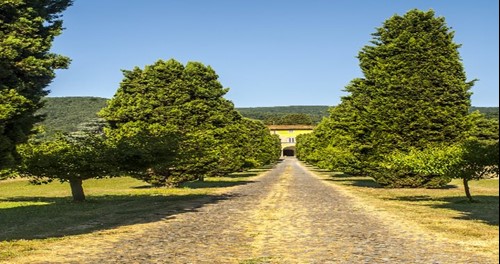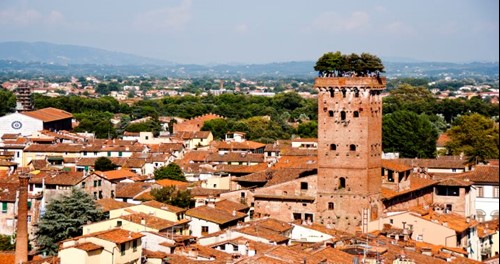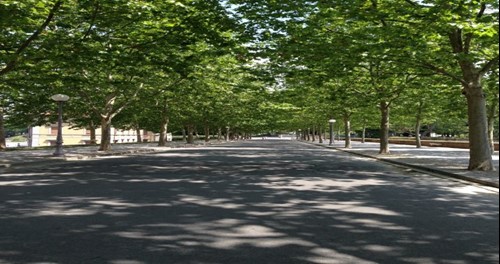
Walls, churches and alleys (the wonders of Lucca)
The historic definition of the "city of a hundred churches" does little justice to the sheer beauty and ancient wonder found in cities like Lucca.
As one of Italy’s most beautiful cities, Lucca is dense with historic and artistic grandeur. This small city is a fascinating network of sacred buildings, traditional boutique shops, towers and palaces that were built centuries ago. All these elements strongly characterise the urban fabric of the city, especially the beautiful historic centre.
A fascinating aspect of the city is its splendidly preserved ancient city walls, which surround the Old Town. There are numerous ways to access the old city through huge gates in the ancient stone walls, leading you to interwoven streets and alleys that connect to the many squares, courtyards, cafés and restaurants.
If you’re thinking about a Lucca holiday and are wondering which are the best squares and attractions to enjoy, here are some of the must-see spots in the ancient city.
Piazza Napoleone
From Via Vittorio Emanuele II, you can sink into the heart of the city and begin the visit to its centre.
Between historic buildings and shops, you’ll reach the tree-lined Piazza Napoleone, the main square of the city, which dates back to 1806, when it was built during the Napoleonic domination of the Principality of Lucca by Elisa Bonaparte Baciocchi, Napoleon's sister. This is why the square bears the name of the emperor.
Palazzo Ducale
One of the main attractions of Piazza Napoleone is the Palazzo Ducale, also known as Palazzo Pubblico, which houses the Museo del Risorgimento, founded in 1925 as a "War Museum". Inside, you’ll find the 1821 Carboneria flag and objects linked to Giuseppe Mazzini and Giuseppe Garibaldi.
Also worth noting is the armoury, where there are weapons from different nations and historical periods. There is also a number of preserved daily objects, paintings, letters and clothes from this period.

Piazza San Michele
As you travel further into the Old Town, along Via Pozzotorelli, you’ll reach Piazza San Michele, the heart of the city and a popular meeting point in Lucca.
The square is surrounded by a beautiful curtain of medieval buildings with a stunning multi-story structure and architecture with impressive six-sided arches, making it a wonderful find if you have an interest in historic architecture.
Among the main buildings, there is the fifteenth-century Palazzo Pretorio, and Palazzo Gigli, which dates back to the first half of the sixteenth century.
San Michele in Foro
Another treasure of the square is the splendid church of San Michele in Foro. When you stand in the presence of this spectacular church, it’s difficult to not be enchanted.
Strongly influenced by the Pisan Romanesque style, the San Michele has a façade adorned with four tiers of loggias and surmounted by a large statue of the Archangel Michael, featuring wings with metal laminae, and with two angels on its sides.
The beautiful exterior gives you a hint of the delights that await you inside the church. The interior boasts three naves and a barrel vault, which features the Madonna with Child in enamelled terracotta by Andrea della Robbia, the Pala Magrini by Filippino Lippi and the High Relief of the Virgin sculpted by Raffaello da Montelupo.

Via Fillungo
Continuing on Via Roma you can reach the vibrant Via Fillungo. This street cuts through the city’s heart and is the place to go if you want to discover crafts and the commercial activity of the Old Town. The street is lined with boutique shops and there are little restaurants and bars tucked in every corner. Here you’ll also find several medieval buildings to admire, as well as one of the city’s most popular pizzerias: Sbragia.
Torre delle Ore
If you travel further, to the corner of Via dell'Arancio, you’ll find the medieval Torre delle Ore. Standing at 150 metres, it is the tallest of the 130 towers that still stand from the Middle Ages in the Province of Lucca.
The tower is equipped with a clock dating back to 1390, which now features an eighteenth-century mechanism with a manual winding system that is among the few still functioning in Europe today.

Piazza dell'Anfiteatro
The lively Via Fillungo reaches one of the most characteristic and scenographic areas of Tuscany, the beautiful Piazza dell'Anfiteatro, also known as Piazza del Mercato.
This is an area full of restaurants, taverns, bars and trattorias. The square is accessible through four vaulted doors and there are plenty of cafes and bars to enjoy along the piazza’s circumference.
Built on the remains of the ancient Roman amphitheatre of the second century AD, it dates back to medieval times. Citizen meetings were once held here, but the piazza was eventually filled with buildings that were used as powder magazines, prisons or salt stores in ancient times. Today, these buildings are some of the best bars in Lucca.
The Basilica of San Frediano
A stone's throw from Piazza dell'Anfiteatro there is the Romanesque Basilica of San Frediano. The Basilica of San Frediano has beautiful Byzantine-style mosaics that embellish the façade and, on the inside, 40 different Roman columns.
Built in various periods, the bell tower is constructed with a dark stone base from before the twelfth century and the upper part using light stone, which was eventually rebuilt in the thirteenth century.

Cathedral of San Martino
As you journey through Lucca, you’ll make your way to the Cathedral of San Martino, founded, according to tradition, by Bishop Anselm in 1063.
It boasts a facade inspired by the Cathedral of Pisa that is enriched by elements linked to the Romanesque style of Lucca. There is also a beautiful portico (or porch), which was once occupied by money changers who targeted pilgrims in transit.
Also rich is the interior, with three naves featuring valuable works of art, including the Funeral Monument of Ilaria del Carretto by Jacopo della Quercia and placed in the sacristy, as well as The Last Supper by Jacopo Tintoretto.
A stone's throw from the Cathedral is the Cathedral Museum, an interesting historical residence that allows you to appreciate the artistic changes of the various eras in Lucca, including collections of stone artefacts, statues, paintings, chalices, chandeliers and so much more.
Shopping in Lucca
Lucca is an uninterrupted path of art, beauty, history and culture. The city also has plenty of exciting places for those looking to do a bit of shopping.
There are pastry shops, jewellers, embroidery shops, fabric workshops and fashion retailers dotted all about this magical city. Many can be found on Via Fillungo, but there are shopping opportunities all around you within the Old Town.
The trattorias and restaurants of Lucca are where you’ll be able to sample the finest tortelli, stuffed with beef or pork, and you must also try to famous Zuppa di Lucca, which is a type of Tuscan bean soup made with spelt.
We’d also recommend the stewed rabbit with tomato, onion, bitter olives, garlic and chilli pepper, which goes perfectly with a red wine from the hills of Lucca.
Get in touch
If you’d like to travel Lucca or elsewhere in Tuscany on your Tuscany package holiday, our Italy experts are waiting to hear from you. Contact us via our online form today or call us at (UK) 01223 637331or (US) 347-594-5500.
Search Keywords
Enter keywords below to perform a search within the events to find more relevant posts